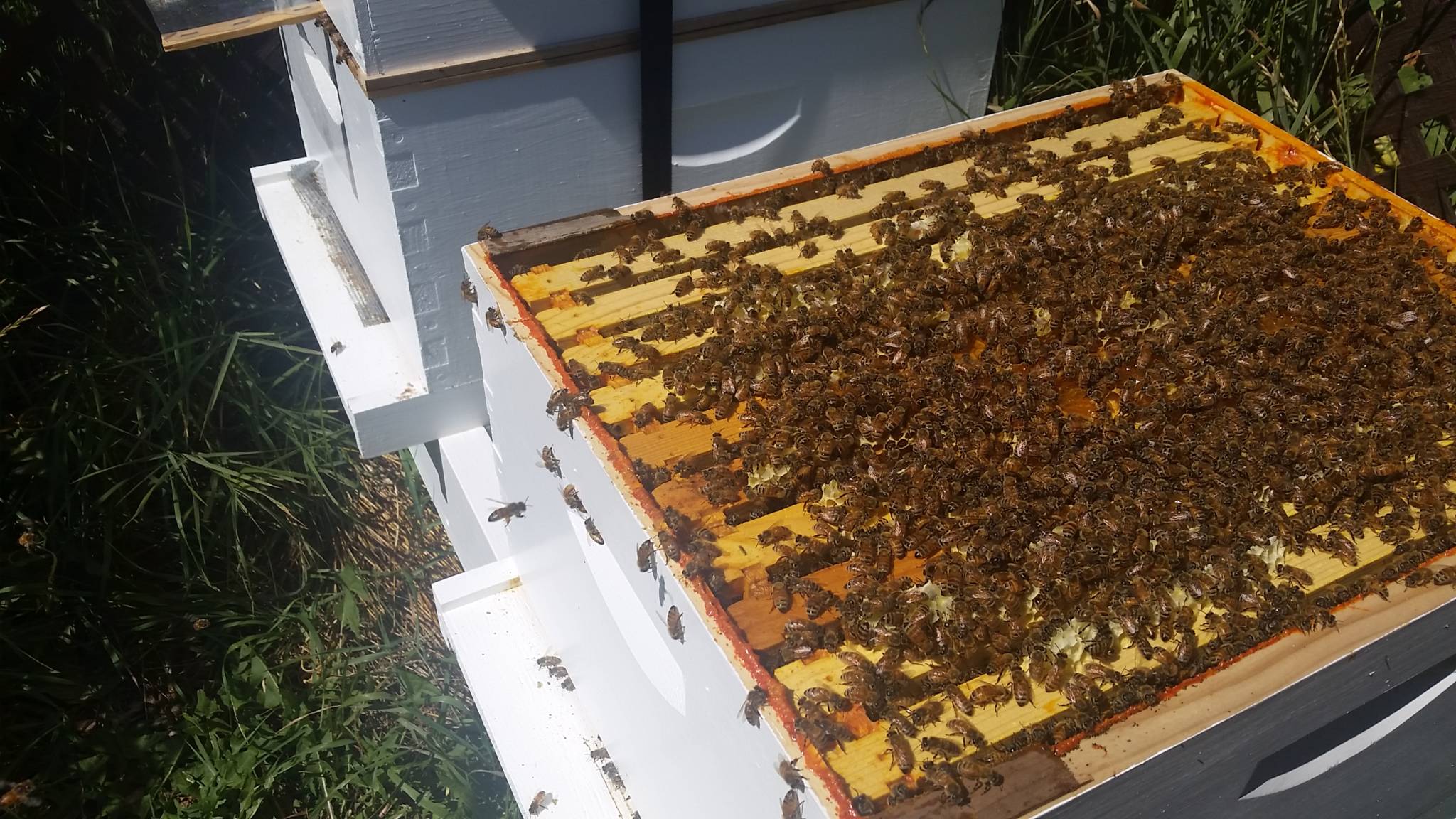
Will Bees Help Your Greenhouse?
Attracting bees to your greenhouse will certainly encourage ample harvests. New greenhouses don’t always get discovered by local pollinators, which might leave the gardener empty-handed, or with much less produce than anticipated when it comes time to harvest. It is the job of the gardener to help pollinators find the flowers hidden inside the greenhouse. If you want to be a productive gardener, it helps to have pollinators do some of the work. There are many different ways to attract bees and other pollinators in the greenhouse, so let’s explore some of the possibilities.
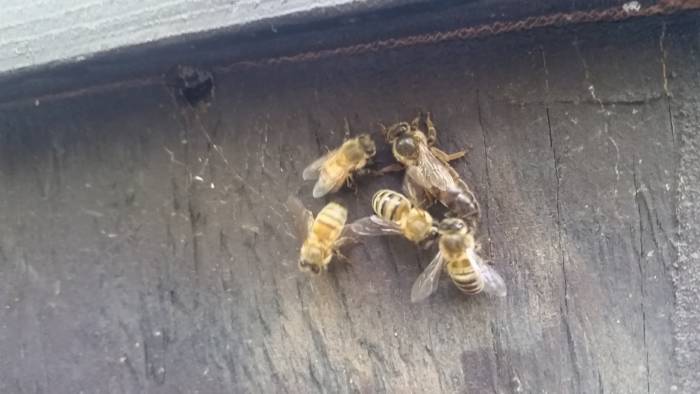
Become A Beekeeper
If you are interested in becoming a beekeeper, this is a great way to get bees in the greenhouse. If not, there are other options outlined below. There are tons of resources available if you want to become a beekeeper. The best way to start learning is to join a local bee club, attend meetings, and get some hands-on experience with some local beekeepers. If you live in Colorado, for example, you can visit the Colorado Beekeepers Association website and find the organization nearest to you. Having some hands-on experience with some local beekeepers will help you successfully keep your bees alive, healthy, and fruitful.
There are many ways to attract and keep honeybees and different types of hives. Naturally, bees will find caves, cavities in rocks, or hollowed-out trees to make their home. People have used the following types of hives for thousands of years: clay or mud hives, skeps, and hollowed-out trees, but these are not suitable if the beekeeper wishes to harvest honey. They have been banned in many places since the beekeeper cannot inspect the hive without causing serious damage and/or killing the entire hive. The three most common types of hives used for beekeeping today are the top bar, Warre, and Langstroth. Most modern beekeepers will be using a variation of one of these three types of hives because the comb can be removed and the hive may be inspected for pests, and/or disease. It also makes it possible to harvest some of the honey without killing the colony.
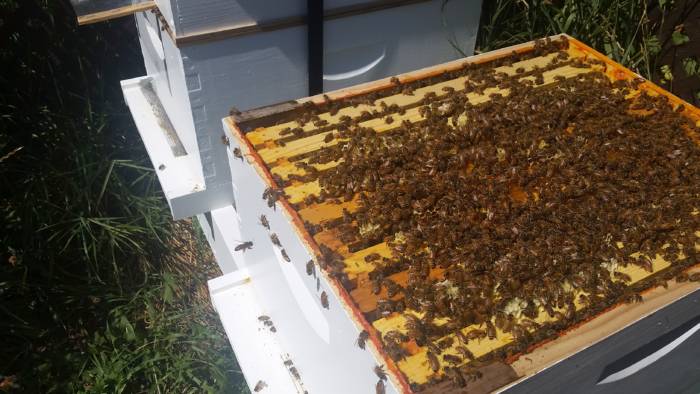
Hives and beekeeping equipment may be purchased from a few different locations. You might even prefer to build a hive on your own. There are plenty of plans on the web for building many different types of hives and necessary equipment. A completely new hive design hit the market recently and it might be interesting to give a try. It is called the Flow hive. If you would rather go with tried and true equipment that has been around for a long time, Mann Lake is a great source for beekeeping equipment. Dadant & Sons is another great place to purchase beekeeping supplies. These companies also sell packages of honey bees.
Honeybee packages are not a bad way to get started with beekeeping. A package will come directly to you in the mail. The challenge with packages is that the bees might not be adapted to your climate. It is always better to find local beekeepers, apiaries, and bee clubs. You are much more likely to get your hands on local bees that are adapted to your climate. Five-frame “nucs” (nucleus colonies) are a very common way to start your first hive. Five-frame nucs are great because you will often get a laying queen with thousands of worker bees. The frames will be drawn with comb, filled with stores, and plenty of healthy brood. Yet another way to get your hands on some honeybees is through swarm traps or cutouts. Both of which require some hands-on experience to be successful. Cutouts can be a great way to get a new hive, but if you are not used to handling honeybees, I would not suggest doing it alone. Swarm traps are much less invasive, and a great way to get yourself a new hive, but it takes a ton of patience. If you live near an apiary or another beekeeper, your chances of catching a swarm are much higher.

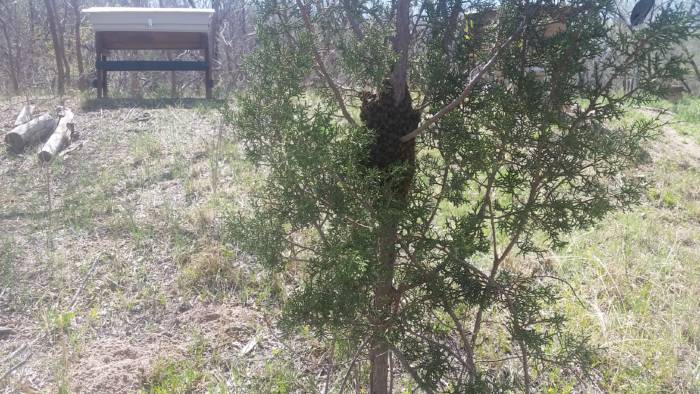
Honeybees in the Greenhouse
We often get the question: Can I put a hive in the greenhouse? The answer is no, at least not for honeybees. Honeybees need to be kept outside so that they experience seasonal temperature fluctuations. You also do not want the bees to get territorial in your greenhouse. In the middle of winter, a small greenhouse will not support a large colony of bees and there will be no food sources outside for them to forage on. Honeybees do not hibernate. They form a cluster, eat honey, and keep each other warm by flexing their thorax muscles all winter long. Bees form a cluster when the outside temperature is 64°F or lower and the colony begins to flex their muscles when outside temperatures hit 23°F. As it gets colder, the hive gets more and more compact. As it gets warmer, they expand. When temperatures get above 65°F, they will take “cleansing flights” and eliminate waste. The core of the cluster in the middle of the winter is ideally around 95°F, but no lower than 55°F, otherwise the colony will die.
In August 2021 Growing Dome Sales Manager and IT Genius, Kyle Brookens rehomed a swarm of lost bees at our office in Pagosa Springs, Colorado.
Other Bees in the Greenhouse
Believe it or not, honeybees are not the most effective species for greenhouse pollination. Leafcutter bees and Bumblebees are far better candidates. Honeybees tend to get disoriented inside greenhouses due to the nature of their vision. Leafcutter bees are known to be the best greenhouse pollinator because they stay close by, and they are more efficient pollinators compared to honeybees and bumblebees. I don’t have personal experience raising Leafcutter bees, but they are supposed to be easy to keep. They will need the right kind of plant leaves, as they use them to make cocoons. Peas, Lilacs, Rose, or Virginia Creeper plants are a good choice. Bumblebees are still a good option because they are more efficient pollinators than honeybees. Bumblebees are particularly good at pollinating plants in the Nightshade family (such as tomatoes or eggplants). Although they are not as easy to raise, they are still a great option, especially if you have a lot of Nightshade plants in your greenhouse.
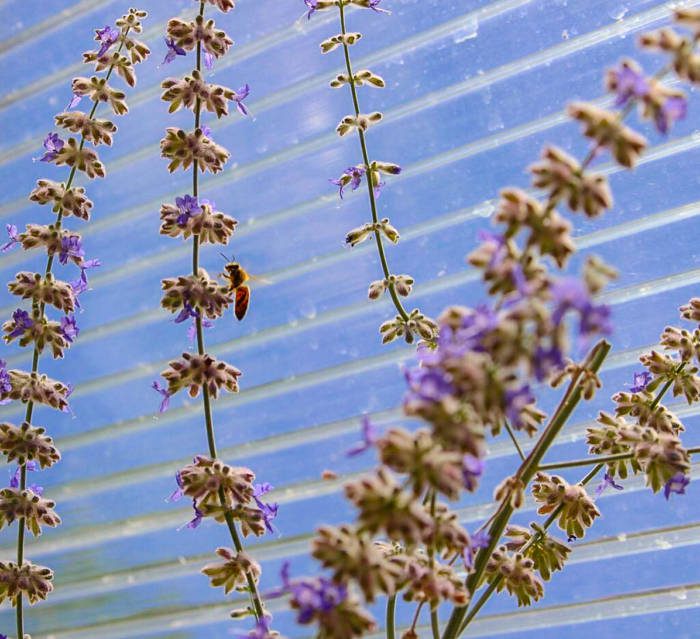
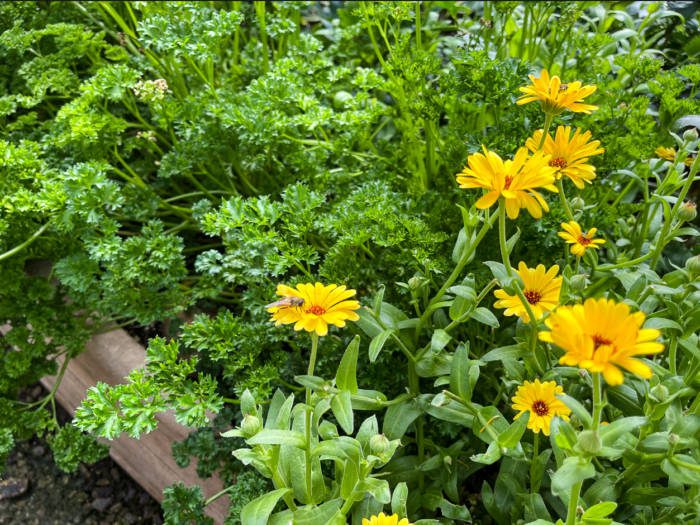
Types of Pollinators
Most gardeners know that honeybees are not the only pollinators. Pollination can take many different forms. Wind is a pollinator, for example. Many different insects such as wasps, butterflies, bumblebees, hoverflies, ants, beetles, moths, and even mosquitoes help pollinate plants. Certain species of bats and birds pollinate plants. The gardener plays a roll in pollination as well. While watering, the gardener might disturb the flowers enough to distribute some pollen. The gardener might even bump or brush the plant while passing by and carry pollen to another plant or other flowers. While pruning, the gardener will certainly pollinate plants along the way. Needless to say, bees are not the only pollinator, so if you don’t have many native bees flying around or have any interest in becoming a beekeeper, there are alternatives.
Attracting Pollinators
Whether you decide to become a beekeeper or not, attracting pollinators and providing them with sources of food will encourage them to find your greenhouse and pollinate the flowers. The more diverse your population of pollinators, the better. Some pollinators are more efficient than others, furthermore, some pollinators gather nectar from specific plants. Different plants bloom at different times during the year, providing nectar for pollinators throughout the growing season. Therefore, it is in the gardener’s best interest to provide a diversity of plants, and ultimately, food sources, nesting material, and/or homes, for as many different pollinators as possible.
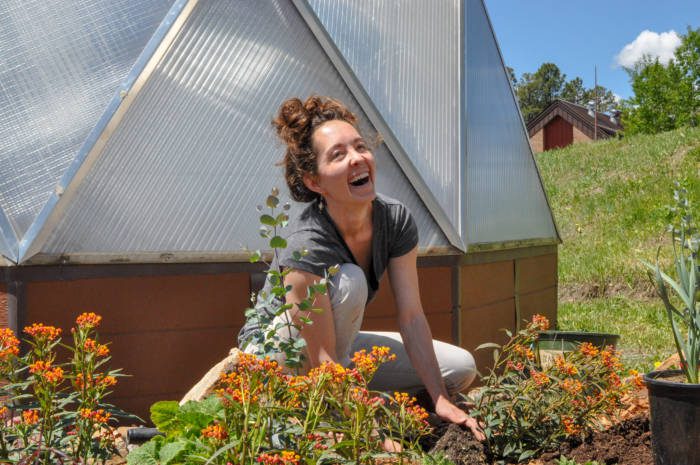

Many seed companies are now selling mixtures of native plant seeds that will benefit pollinators. For example, Beauty Beyond Belief is a seed company in Boulder, Colorado. They have different wildflower seed mixes for different states and regions in the United States. Planting these wildflower mixtures will benefit many different types of pollinators. They also sell special flower mixtures that will attract honeybees, bumblebees, birds, and butterflies. Some of the flowers are annuals and others are perennials. Annuals will need to be re-seeded each year. Many different plants can be planted outside the greenhouse to attract pollinators. Milkweed is especially good for butterflies. Sunflowers will benefit bees and birds alike. Beebalm is a perennial plant that should be in every outdoor garden because it will attract many different species of pollinators, plus the blooms are spectacular. Any space near or around your greenhouse should be filled with plants that attract pollinators. This will encourage pollinators to venture inside to find additional sources of food.
Inside the greenhouse, it is advisable to grow some plants that will benefit pollinators. There are many different plants that will benefit pollinators and gardeners alike. Catmint, Peas, Lemonbalm, Calendula, Lavender, Mint, and Echinacea are prime candidates for the greenhouse. Just this morning, I saw a few honeybees collecting nectar from a blooming Catmint plant in my greenhouse. Dill, Fennel, Alyssum, and Borage are good plants to have inside the greenhouse too. A few of these plants should be near door and vent openings to invite pollinators inside. Open doors and vents will allow them to come and go as they please. If you decide to screen the vent openings and doorways, there are still alternatives to ensuring that the plants in your greenhouse are adequately pollinated.
How To Pollinate in a Greenhouse
Self Pollination
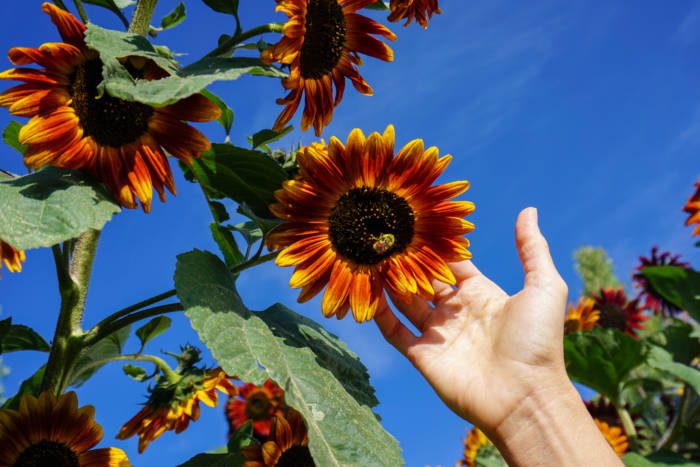
Not all plants require pollination to set fruit. Self-fruitful, or self-pollinated, plants have flowers that shed pollen directly on the stigma, such as peas. Self-unfruitful plants cannot fertilize themselves and need pollen from a related, genetically different plant. This is known as cross-pollination. Avocados are a good example. Some plants, such as tomatoes, have complete flowers, which means that every flower contains both the pistil and stamen. Most complete flowers are easily pollinated by taping flowers, brushing up against the plant, or shaking the plant. Incomplete flowers mean that the plant produces male and female flowers separately. These types of plants rely heavily on pollination, much like self-unfruitful plants. Good examples of plants that produce incomplete flowers are squash and most cucumbers. If the greenhouse is screened off and you don’t have any pollinators in the greenhouse, plants with incomplete flowers and self unfruitful plants will need to be hand-pollinated.
Hand Pollination
It might sound like a chore, but most hand pollination is easily accomplished in the greenhouse. As identified above, some flowers just need a good shake or tap. For Incomplete flowers, the greenhouse gardener may use a feather or paintbrush to pollinate the female flowers. Simply gather pollen with the feather from a male flower and brush the pistil on the female flowers. If you run out of pollen, simply revisit a male flower. Alternatively, you can remove a male flower and touch the female flowers to transfer pollen. In the case of plants that need to be cross-pollinated, the feather or brush method is a good option. Instead of visiting flowers on the same plant, you will need to transfer pollen from the related, genetically different plant. For the greenhouse environment, it is best to choose plant varieties that are self-fruitful and have complete flowers.
Pollination Challenges
– High or low temperatures
– Inadequate pollen transfer
– Humidity (too low)
– Soil nutrient levels too high or low
– Timing (flowering time is key)
– Soil moisture too low
Join the Inner Circle
An exclusive place for year-round gardeners. Join us to receive our monthly newsletter, “The Happy Grower”. In our newsletter we provide community stories, event updates, expert gardening tips, and exclusive offers.


2 Comments
Need help in plant pollination in desert area. Plants include various squash, nightshade family plants, peas, Brussel sprouts, lettuce etc.
Do you have one of our Growing Spaces greenhouses?